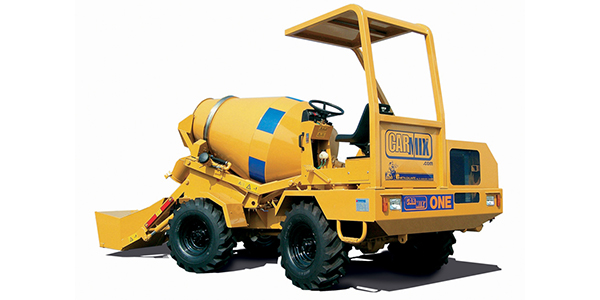
Concrete mixers are essential for construction projects, providing a consistent mix of concrete needed for various applications. Over time, different types of concrete mixers have been developed to enhance efficiency and reduce labor costs. Two popular types are self-loading concrete mixers and traditional mixers. Understanding the cost-effectiveness of each can help construction managers make informed decisions.
Self-Loading Concrete Mixers
Self loading concrete mixers combine the functions of a concrete mixer and a loader. They are highly versatile and mobile, capable of loading, mixing, and transporting concrete on-site. Here are some key features:
- Automatic Loading and Mixing: Self-loading mixers have a hydraulic shovel that loads materials into the mixing drum. This automation reduces labor costs and increases efficiency.
- Mobility: These mixers are mounted on wheels and can be easily transported to different parts of a construction site.
- Electronic Weighing System: They come with an electronic weighing system to ensure precise measurements and consistent quality.
- High Efficiency: Self-loading mixers can produce concrete continuously, which is ideal for large projects.
- Reduced Labor Costs: Since they combine multiple functions into one machine, fewer workers are needed.
Traditional Mixers
Traditional concrete mixers, also known as drum mixers, are stationary and typically require additional equipment and labor for loading and transporting the concrete. Here are some key aspects:
- Manual Loading and Mixing: Materials must be manually loaded into the drum, requiring more labor.
- Stationary: These mixers are usually fixed in one location, making it necessary to transport the mixed concrete to different parts of the construction site.
- Lower Initial Cost: Traditional mixers generally have a lower upfront cost compared to self-loading mixers.
- Suitable for Small Projects: These mixers are ideal for small to medium-sized projects where mobility and automation are not critical.

Cost-Effectiveness Analysis
To determine which type of mixer is more cost-effective, several factors must be considered:
- Initial Investment: Self-loading mixers have a higher initial cost compared to traditional mixers. However, the investment can be justified by the savings in labor and increased efficiency.
- Labor Costs: Self-loading mixers significantly reduce labor costs since they combine loading, mixing, and transporting functions. Traditional mixers, on the other hand, require separate labor for each function, increasing overall labor costs.
- Operational Efficiency: Self-loading mixers provide continuous mixing and can easily move around the construction site, reducing downtime and increasing productivity. Traditional mixers are less efficient due to their stationary nature and manual loading process.
- Maintenance Costs: Both types of mixers require regular maintenance. However, self-loading mixers are often built with robust components designed for heavy-duty use, potentially reducing long-term maintenance costs.
- Project Scale: For large-scale projects, self-loading mixers offer significant advantages in terms of efficiency and cost savings. For smaller projects, traditional mixers might be more economical due to their lower initial cost.
FAQs on Self-Loading Concrete Mixers
A1: The main advantages include automatic loading and mixing, high mobility, reduced labor costs, precise electronic weighing, and increased operational efficiency.
A2: While they are ideal for large-scale projects, self-loading mixers can also be beneficial for small projects due to their efficiency and reduced labor requirements. However, the higher initial cost may be a consideration.
A3:These mixers are equipped with electronic weighing systems that ensure precise measurements of materials, resulting in consistent and high-quality concrete
A4: Regular maintenance includes routine inspections, lubrication of moving parts, and timely replacement of worn components. Proper maintenance ensures optimal performance and longevity.
A5: Yes, their mobility and ability to operate independently make self-loading mixers suitable for remote or hard-to-reach areas.
Conclusion
Both self-loading concrete mixers and traditional mixers have their advantages and disadvantages. Self-loading mixers offer higher efficiency, reduced labor costs, and better mobility, making them suitable for large-scale and complex projects. Traditional mixers, with their lower initial cost, are ideal for smaller projects with less demanding requirements. The choice between the two depends on the specific needs and scale of the construction project, as well as budget considerations. By carefully evaluating these factors, construction managers can select the most cost-effective solution for their projects.
Recent Articles
- Market Growth and Future Trends in Self-Loading Concrete Mixers for the Construction Industry
- How Self-Loading Concrete Mixers Reduce Labour Costs and Increase Productivity?
- Comparing Self-Loading Concrete Mixers vs. Traditional Concrete Mixing Methods
- The Role of Self-Loading Concrete Mixers in Modern Construction
- Self-Loading Concrete Mixer Machines for Infrastructure Development Projects
Copyright © 2025, Apollo Carmix Equipments Private Limited (ACEPL), All rights are reserved.
Web Design & SEO by Webmasterindia

